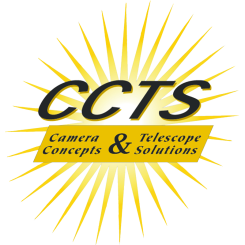What Can I See...and How Well Can I See it?
- Posted on
- By Jeffrey Norwood
What Can I See…….
And How Well Can I See it?
7x35 Binoculars
Planet Jupiter as a bright orange or yellow spot, and 4 of its moons
Planet Saturn as a bright yellow dot, and its moon Titan, which looks like a star.
The Hercules Cluster (M13) as a fuzzy patch.
Andromeda galaxy (M31) as a large fuzzy area, more condensed at the center.
Alcor and Mizar as a double star.
Herschel's Garnet Star as a dark red star.
Trifid and Lagoon nebulas (M20 and M8) as dim fuzzy patches (more detail under dark skies.)
Orion Nebula (M42) as a light, foggy patch.
Some detail can be seen on the Moon.
60mm Refractor Telescope
Saturn and its rings are clearly visible, along with 3 moons that look like stars.
Jupiter shows a disk with bands, 4 moons appear as stars nearby.
Bright globular clusters like M13 and M22 can be resolved into stars at the edges.
Some detail appears in the bright nebulas like the Orion nebula, Lagoon and Trifid nebulas. They look like wispy cloudy areas. The "Trapezium" appears in Orion, whether it resolves as 4 stars depends on the conditions and the quality of the telescope.
Uranus and Neptune can be seen as colored dots.
20 x 60 Binoculars
At 20x these binoculars require a stand of some sort, you can't hand-hold binoculars over about 10x still enough to see much. I recommend a parallelogram mount.
The planets Jupiter and Saturn don't show a disk, but they and several moons are visible, as are Neptune and Uranus.
Detail of craters and mountains can be seen on the Moon.
Andromeda galaxy shows a difference between the nucleus and halo areas.
Bright nebulas show some detail and some pale green color.
The Moon shows some detail in craters and mountains.
90mm to 4.5" Telescope
Planets are similar to what is seen with a 60mm scope, slightly more detail in Jupiter's bands and a better chance of seeing bands on Saturn. You can go to higher magnifications with these scopes than 60mm (up to about 200x max.)
Nebulas show a lot more detail, trapezium is easy to split into four stars. You can see almost all of the Messier list, all of it under excellent conditions with good optics. The galaxies typically appear as dim fuzzy patches. This size of scope really opens up the heavens for a casual observer, and makes a great starter scope for a dedicated observer, as well as a travel scope for those who've upgraded to larger scopes.
6" (150mm) Telescope
You can see the shapes of galaxies that appeared only as dim patches in a 90mm/4.5" telescope, but no arms or dark lanes yet. The bright nebulas all appear as beautiful showpiece objects. Globulars and open star clusters are very nice, and a 6" does a reat job on lots of multicolored binaries. The 6" makes a good portable all-around scope. All of the Messier list is visible in a 6" with good optics. Details within Jupiter's bands becomes visible. Herschel's Garnet Star is visible as a deep orange-red. A 6" scope can keep a dedicated observer busy with new objects for a few years, and a casual observer busy for life. A 6" scope is also many amateur's favorite second scope, once they get a bigger one.
8" (200mm) Telescope
Galaxies that were visible as shapes in the 6" begin to take on detail. Arms appear, and some faint detail of objects inside the galaxies. Fainter nebulae can be explored, and nebulae visible with smaller instruments take on significantly more detail and greater extent, since the dimmer parts are now visible. Much detail can be seen in Jupiter's bands. Details of star clusters can be seen even under marginal sky conditions. Herschel's Garnet Star is a deep orange. A dedicated observer can stay busy seeing new objects for many years with an 8" scope.
10" (250mm) Telescope
Galaxies that started to show detail in an 8" telescope now show that detail clearly. It's easier to pick out nebulas that were faint in the 8". The planets start to get "too bright", requiring an aperture mask to cut down the light to bring back some detail. Herschel's garnet star starts looking amber. Details like globular clusters and bright nebulas in the Andromeda galaxy become visible. Other galaxies, like the Whirlpool and Triangulum show their arms nicely under good skies. A 10" scope can provide a lifetime of new objects to view to even the dedicated observer.
12" (300mm) Telescope
You can spend all night looking at things in the Andromeda galaxy with a 12" or larger telescope. Many galaxies show details like arms and dark lanes. You can see more detail in tight star clusters. More is visible under marginal sky conditions. Scopes that are 12" and larger provide a lifetime of use, but are best in situations that don't require a lot of moving of the scope. Some are quite portable, but they still tend to be heavy and take up enough room that many astronomers with larger scopes have a smaller scope on hand for when the big one is more than they feel like handling.
